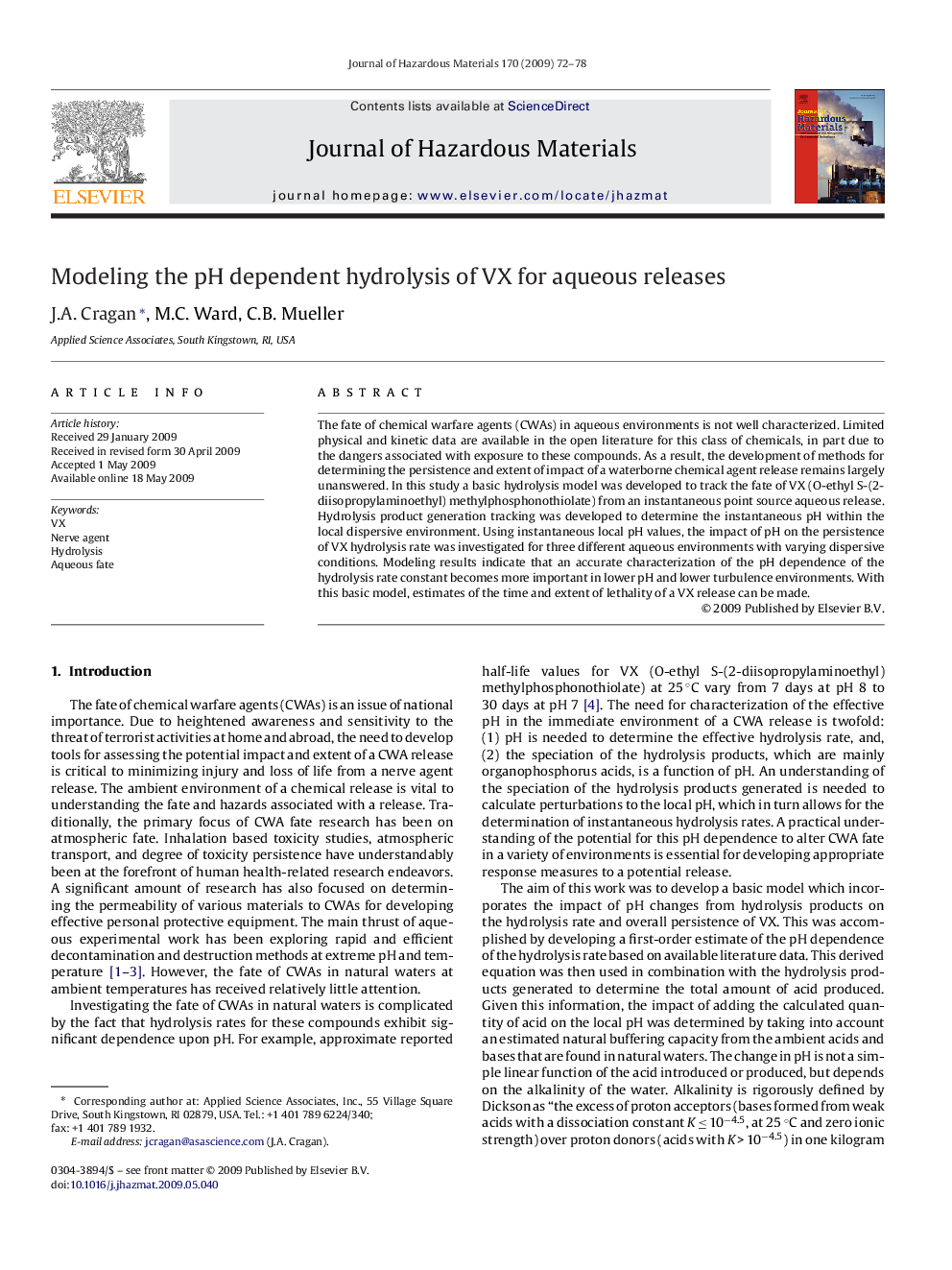| Article ID | Journal | Published Year | Pages | File Type |
|---|---|---|---|---|
| 581393 | Journal of Hazardous Materials | 2009 | 7 Pages |
Abstract
The fate of chemical warfare agents (CWAs) in aqueous environments is not well characterized. Limited physical and kinetic data are available in the open literature for this class of chemicals, in part due to the dangers associated with exposure to these compounds. As a result, the development of methods for determining the persistence and extent of impact of a waterborne chemical agent release remains largely unanswered. In this study a basic hydrolysis model was developed to track the fate of VX (O-ethyl S-(2-diisopropylaminoethyl) methylphosphonothiolate) from an instantaneous point source aqueous release. Hydrolysis product generation tracking was developed to determine the instantaneous pH within the local dispersive environment. Using instantaneous local pH values, the impact of pH on the persistence of VX hydrolysis rate was investigated for three different aqueous environments with varying dispersive conditions. Modeling results indicate that an accurate characterization of the pH dependence of the hydrolysis rate constant becomes more important in lower pH and lower turbulence environments. With this basic model, estimates of the time and extent of lethality of a VX release can be made.
Keywords
Related Topics
Physical Sciences and Engineering
Chemical Engineering
Chemical Health and Safety
Authors
J.A. Cragan, M.C. Ward, C.B. Mueller,
